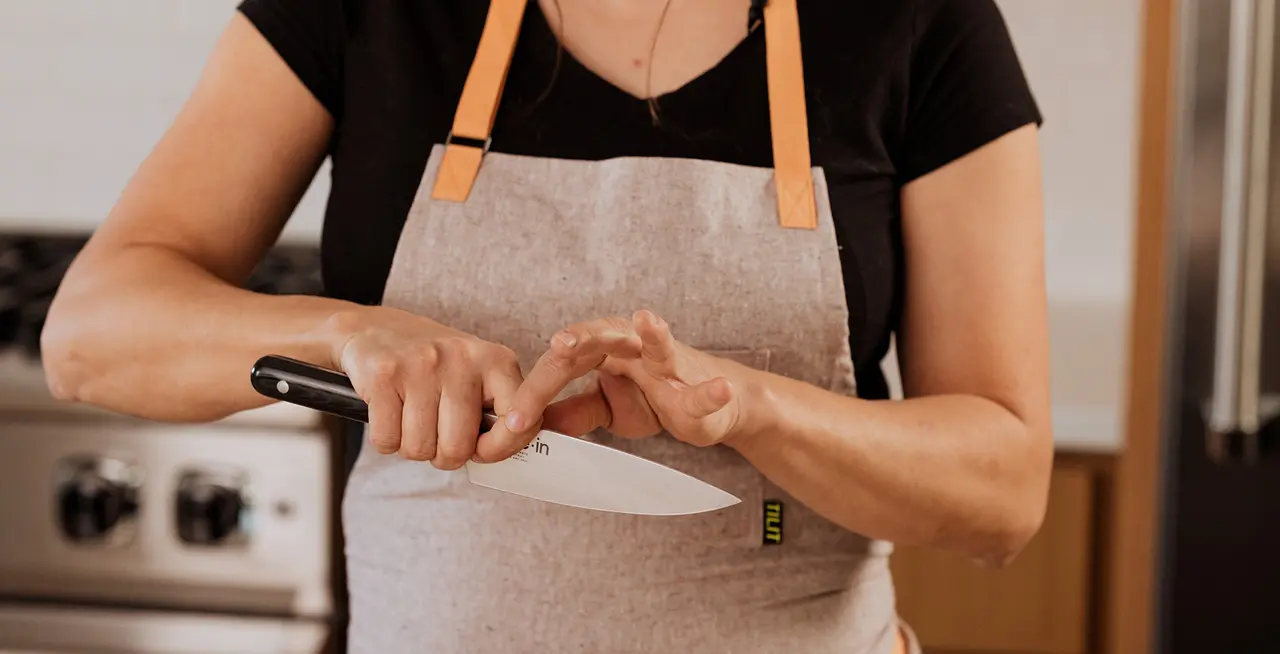Handling Deep Knife Cuts During Grilling: Essential Tips for BBQ Fans
Written By James Morgan
As a barbecue enthusiast, you know that handling knives is a critical part of the grilling experience. However, accidents can happen, and you might find yourself dealing with a deep knife cut. Knowing how to deal with deep knife cuts effectively is crucial for your safety and enjoyment of grilling. In this article, we will provide in-depth guidance on managing deep knife cuts, helping you stay safe while enjoying your favorite pastime.

Initial Steps to Handle a Deep Knife Cut
The first moments after a deep knife cut are critical. Stay calm and follow these steps:
Step 1: Apply Pressure
Immediately apply pressure to the wound using a clean cloth or paper towel. This helps to stop the bleeding.
Step 2: Clean the Wound
Once the bleeding is under control, clean the wound with water to remove any debris.
Step 3: Use an Antiseptic
Apply an antiseptic to prevent infection. Clean the wound gently and apply an antibiotic ointment if available.

Further Care After the Initial Treatment
After taking the initial steps to control the bleeding and clean the wound, you need to ensure proper healing:
Step 4: Bandage the Wound
Use a sterile bandage to cover the wound. Change the dressing daily to keep the cut clean.
Step 5: Monitor for Infection
Keep an eye out for signs of infection such as redness, swelling, or pus. If you notice any, seek medical help immediately.

Advanced Care Techniques
For deeper cuts, you might need advanced techniques to ensure proper care:
Step 6: Stitches May Be Needed
If the cut is too deep, you might require stitches. This is crucial for faster and more effective healing. Visit a healthcare professional for this.
Step 7: Maintain Hygiene
Keep the area around the wound clean. Avoid getting the wound wet and change the dressing regularly.
Step 8: Pain Management
Over-the-counter pain relievers can help manage pain. Follow the dosage directions carefully and consult a doctor if needed.

Prevention Tips
Preventing deep cuts while grilling is as important as knowing how to handle them:
Tip 1: Use Sharp Knives
Sharp knives are safer as they require less force, reducing the risk of slipping. Learn about proper knife maintenance here.
Tip 2: Cut on Stable Surfaces
Always use a cutting board and ensure it's on a stable surface to avoid accidents.
Tip 3: Wear Cut-Resistant Gloves
If you're prone to accidents, invest in cut-resistant gloves for added safety.
Tip 4: Focus on Your Tasks
Concentrate while cutting. Distractions can lead to accidents, so keep your focus on the task at hand. For more cutting tips, you can check out this guide onusing kitchen knives safely.
Conclusion
Grilling is a delightful activity, but it comes with its risks, including deep knife cuts. Knowing how to deal with a deep knife cut can ensure you handle injuries effectively and continue to enjoy your grilling experience. Always be prepared and stay safe while handling knives, and enjoy your barbecuing!
FAQs
Q1: When should I seek medical help for a knife cut?
If the bleeding doesn't stop, the cut is very deep, or you notice signs of infection, seek medical assistance immediately.
Q2: Can I keep grilling after a deep cut?
It's better to stop and address the injury first. Only continue grilling after making sure the wound is properly cleaned, bandaged, and not prone to further injury.
Q3: How can I make my grilling area safer to avoid cuts?
Keep your grilling area organized. Use a stable cutting board, sharp knives, and avoid distractions. Wearing cut-resistant gloves can also enhance your safety.
As an Amazon Associate, I earn from qualifying purchases.



